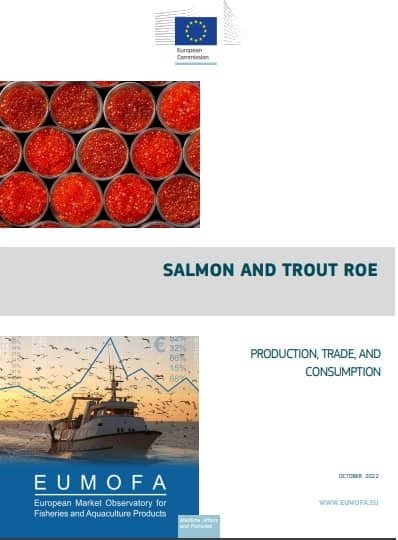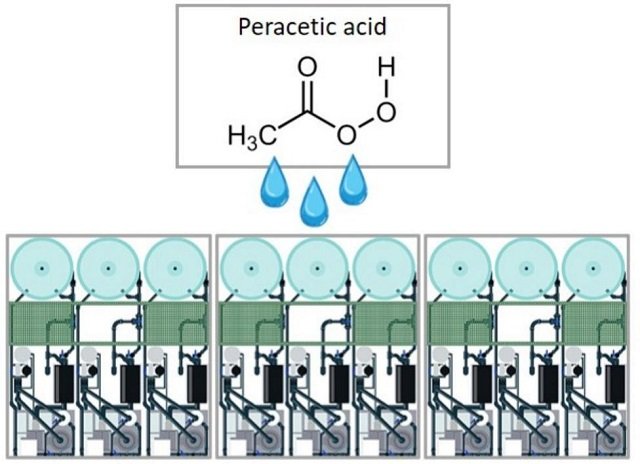Russia.- The research group includes scientists from: St Petersburg University; the Institute of Toxicology, the Federal Biomedical Agency of Russia; and the Institute for Analytical Instrumentation of the Russian Academy of Sciences. They have developed a tool for qualitative and semi-quantitative rapid analysis of fatty acids. These are substances that can reveal nutritional declaration, and can also be biomarkers of serious human diseases.
This technique has already made it possible to analyse several extracts of plants and seafood. It can also describe the fatty acid composition of the follicular fluid of women planning a pregnancy.
“The technique is based on the ability of fatty acids to spread over the surface of the aqueous phase,” said Artem Selyutin, an associate professor at the Department of General and Inorganic Chemistry, St Petersburg University. “If you take a drop of barium acetate solution, apply a sample containing fatty acids to it, then you have their barium salts. By mass spectrometry, converting the salts of fatty acids in a gaseous state, we can determine the presence of all fatty acids contained in the sample. The technique is very sensitive: it is a case of concentrations up to 10-14 mole per litre.”
The findings are published in a top-rated journal Analytical Chemistry.
As the scientist notes, such an approach to the analysis of fatty acids will make the cost much cheaper for laboratories. Moreover, it will take much less time than the chromatographic method of research. It takes only about half an hour against a whole day. What is more, it is possible to screen several hundred samples at the same time. You need only a little analyte – in fact, one drop. The technique is very sensitive, which means that other components of the composition will not affect the result.
The omega-3 and omega-6 groups are especially important for animals and humans among the fatty acids. Our body cannot synthesise them de novo, so it needs to get such substances from food. The technique developed by scientists of St Petersburg University in collaboration with colleagues from academic institutions will help to throw light on which products contain the most useful and varied fatty acid “cocktail”. The pioneering studies conducted on peas, brown algae, tissues of marine molluscs, crustaceans and fish showed interesting findings.
Scientists have discovered that, for example, extracts of fucus algae contain more than 20 different fatty acids, although chromatographic procedures allow us to identify only 14 substances of this group. Moreover, when comparing the fatty acid profiles of daphnia and herring roe, it is found that the qualitative composition of fatty acids is much richer in crustaceans.
Stay Always Informed
Join our communities to instantly receive the most important news, reports, and analysis from the aquaculture industry.
Reference:
Ekaterina P. Podolskaya, Alexey S. Gladchuk, Olga A. Keltsieva, Polina S. Dubakova, Elena S. Silyavka, Elena Lukasheva, Vladimir Zhukov, Natalia Lapina, Manizha R. Makhmadalieva, Alexander M. Gzgzyan, Nikolai G. Sukhodolov, Konstantin A. Krasnov, Artem A. Selyutin, and Andrej Frolov. Thin Film Chemical Deposition Techniques as a Tool for Fingerprinting of Free Fatty Acids by Matrix-Assisted Laser Desorption/Ionization Time-of-Flight Mass Spectrometry. Analytical Chemistry 2019 91 (2), 1636-1643. DOI: 10.1021/acs.analchem.8b05296
https://pubs.acs.org/action/showCitFormats?doi=10.1021%2Facs.analchem.8b05296
Editor at the digital magazine AquaHoy. He holds a degree in Aquaculture Biology from the National University of Santa (UNS) and a Master’s degree in Science and Innovation Management from the Polytechnic University of Valencia, with postgraduate diplomas in Business Innovation and Innovation Management. He possesses extensive experience in the aquaculture and fisheries sector, having led the Fisheries Innovation Unit of the National Program for Innovation in Fisheries and Aquaculture (PNIPA). He has served as a senior consultant in technology watch, an innovation project formulator and advisor, and a lecturer at UNS. He is a member of the Peruvian College of Biologists and was recognized by the World Aquaculture Society (WAS) in 2016 for his contribution to aquaculture.




